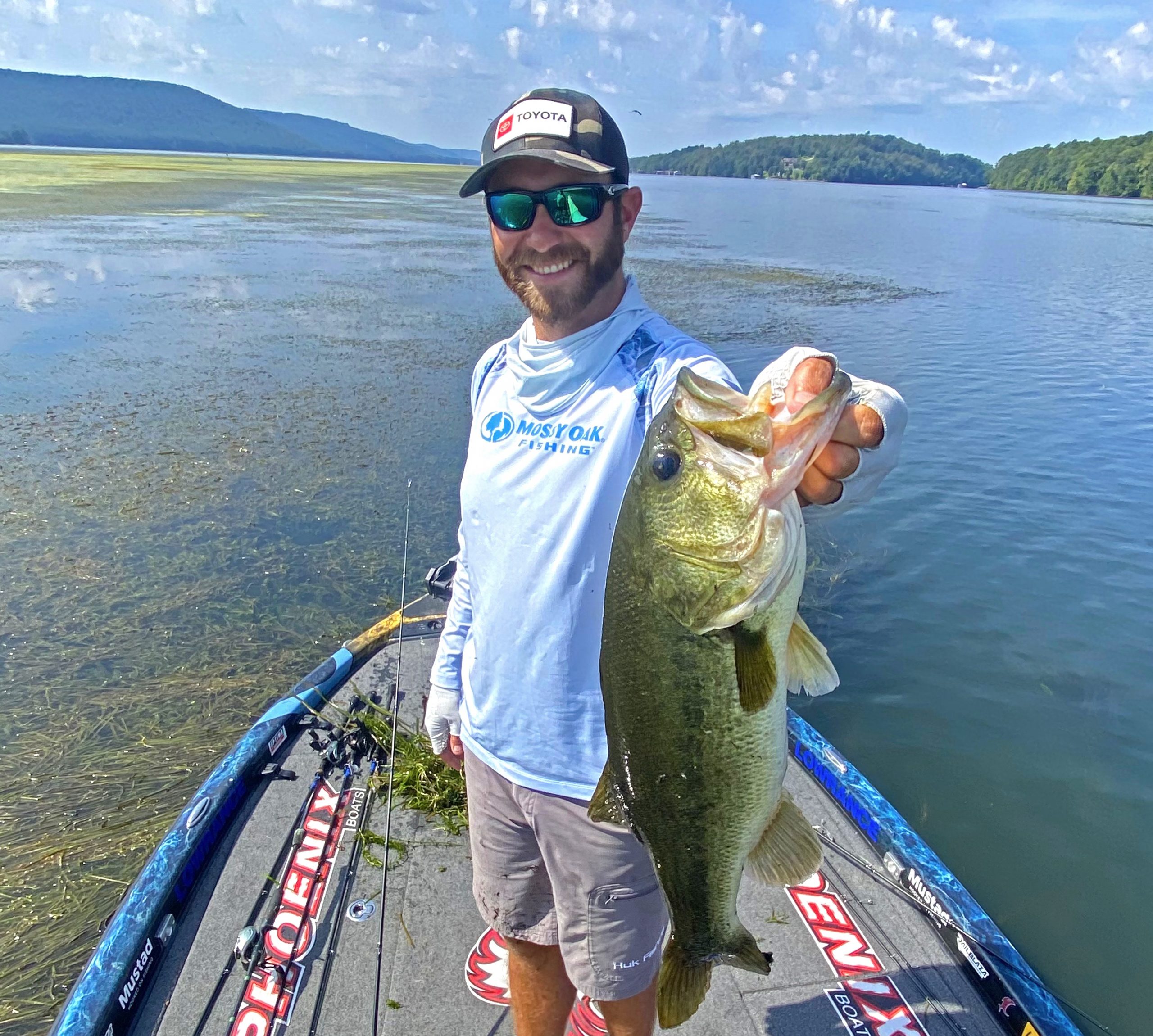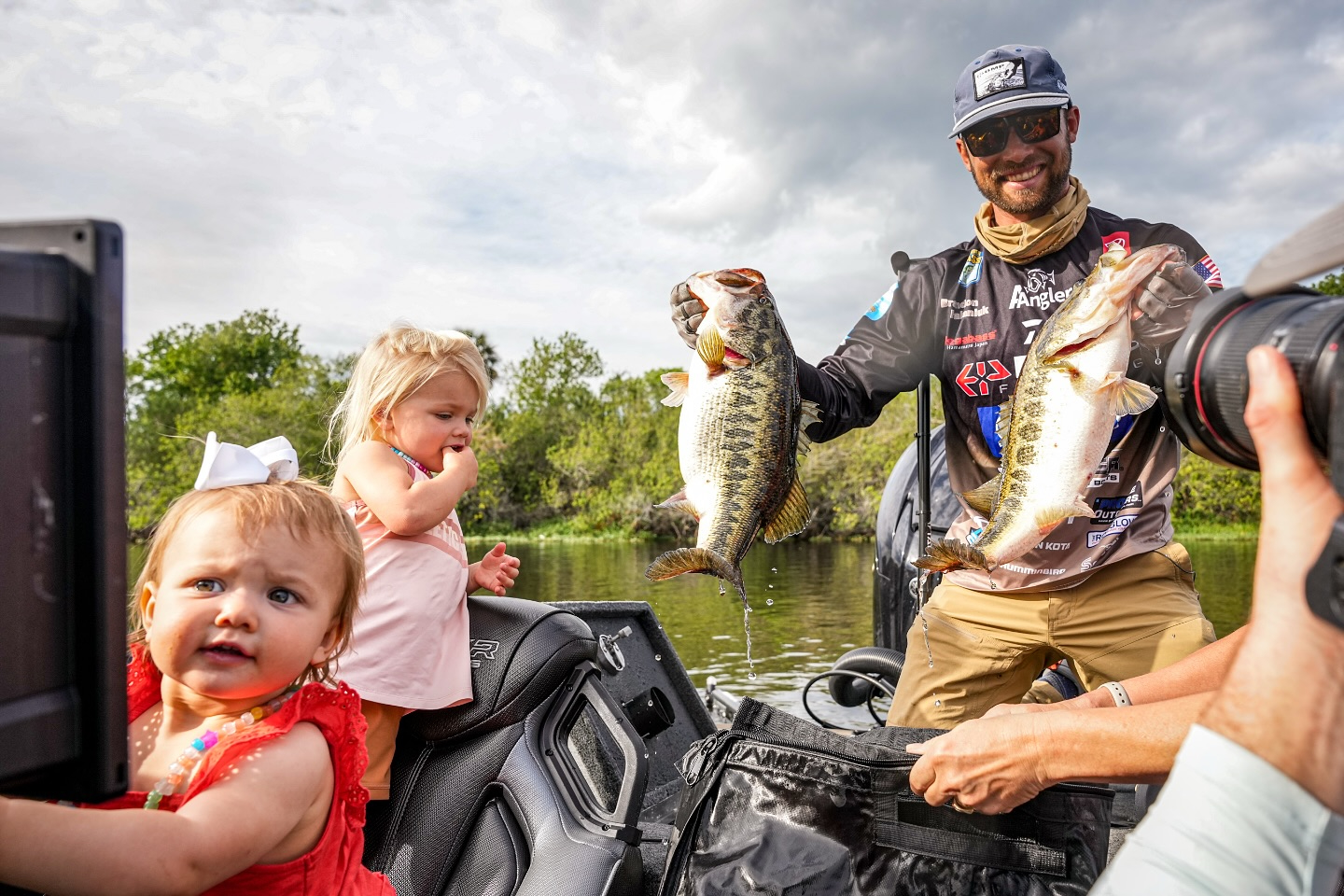Lester’s secrets for fishing the salad
Courtesy of Alan McGuckin – Dynamic Sponsorships
For anglers not used to picking apart coontail, eel grass, milfoil, and hydrilla, as shown from left to right in the attached photo, approaching massive acres of aquatic vegetation can be as intimidating as a high school quarterback walking into an NFL stadium full of fired-up fans.
Team Toyota’s Brandon Lester has made a detailed study of how to pluck bass from grass en route to winning $800,000 thus far in his short pro career. And he graciously shares a look at his playbook in timely fashion as early fall often begins the best ‘grass fishing’ of the year.

A garden variety is best
To the casual observer with an untrained eye, expansive acres of matted vegetation might all look the same. Look closer at a place like iconic Lake Guntersville and you’ll see coontail, eel grass, milfoil, and hydrilla often mixed together like Olive Garden’s famous house salad.
“Anytime you see three or four species of vegetation growing together, I can almost assure you that’s going to be a great place to get bites. In fact, you need to look for places where one kind of grass marries up against the other to form a sort of a transition, that’s the juice,” grins Lester.
Punching hydrilla and frogging milfoil
“I want to be careful about not speaking too general here, but in order to make grass fishing a little easier to grasp, typically, hydrilla grows a little deeper near the main river or creek channel, versus milfoil that grows a bit shallower toward the back of the creek,” says Lester.
“So, for the most part, hydrilla is best suited for punching a little beaver-style creature bait on a 1.5 ounce-weighted Texas rig. Whereas milfoil may only have two or three feet of water under its mats, so they can find a frog a lot easier,” he explains.
He uses 50-pound Vicious No Fade Braided line when frogging, and 60-pound braid when punching a Texas rig.
Create a disturbance, then listen for the Rice Crispies
One trick Lester learned from the ‘old timers’ was to run his boat up into the middle of grass mat to stir the ecological pot beneath. Obviously, this should be done with caution because you can’t be totally sure what hazards lay beneath the huge carpets of vegetation, but it most always rings the dinner bell.
And the best way to tell if the dinner bell has been properly rung is to stop and listen for a couple minutes before ever making a cast. Lester and others will tell you if the bluegill, bugs, and baitfish are active it will sound like Rice Crispies cereal crackling in a bowl of milk.
“If you’ll be patient and listen for two or three minutes, you’ll be able to hear if things are popping and crackling, and if they are, you’re chances of getting bit are good. But if you don’t hear the ‘Rice Crispies’ you should move on,” says Lester.
Drop some BBs in Kermie’s belly
Asked to pick just one frog amid a fishing tackle universe that is overpopulated by amphibian look-alikes, Lester chose a Spro 65 size Bronzeye in a color called natural red, but he adds a little magic to Kermie’s belly.
“I’ll drop two or three BBs into my hollow bodied frogs to add a little noise, and if the grass mats are super thick like hydrilla often gets, I’ll actually add a single ¼-ounce worm weight inside my frogs to make them sit deeper in the water as they bulldoze their way through the thick stuff,” explains Lester.
Listen to Lester’s wisdom, and these once intimidating large acres of aquatic vegetation will have you plucking fat bass from hydrilla and milfoil like a top chef dicing through romaine and iceberg.


















